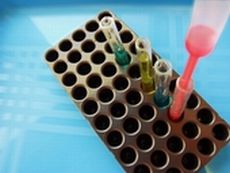Majority of the information was obtained through the use of the Human Genome Project (HGP), but before we get too far ahead of ourselves, lets learn what the Human Genome Project really is.
The History
Started in 1990, it took 13 years to complete the human genome project in 2003. It was coordinated by the U.S. Department of Energy (DOE) and the National Institutes of Health (NIH).
Their goals were:
- identify all the approximately 20,000-25,000 genes in human DNA
- determine the sequences of the 3 billion chemical base pairs that make up human DNA
- store this information in databases
- improve tools for data analysis
- transfer related technologies to the private sector
- address the ethical, legal, and social issues (ELSI) that may arise from the project (3a)
"Genetics is playing an increasingly important role in the diagnosis, monitoring, and treatment of diseases." (3b) The mapping of the human genome has significantly changed the world. HGP allowed researchers to pinpoint genes that may contribute or cause certain diseases. Therefore, biotechnology companies are quickly making new diagnostic tests to help people detect those genes. (3b) |
Gene Mapping
At the National Center for Biotechnology Information (NCBI), a program called Map Viewer allows public access to many different types of genomes and what disease affects what chromosome. With this information available, researchers are able to take parts of the puzzle and figure out ways to prevent the Alzheimer's gene from being activated, because they know where the disease is located.
An Important Discovery:
The Human Genome Project provides researchers information for future experiments. In this case, the HGP allowed them to discover an organism that would be a perfect protocol for experiments and researches.
The experiment:
By researching the Caenorhabditis elegans genome, scientists were able to further understand Alzheimer's Disease.
"Early-onset Alzheimer's is often caused by changes in a single human gene known as PS1 (presenilin gene number one). Researchers at Columbia University in NYC substituted the human PS1 gene for a similar gene in C. elegans." (6a)
The results:
Human genes worked well in the worm. (6a) Now, people can study the worm's reactions to certain medications and treatments that may help against Alzheimer's.
